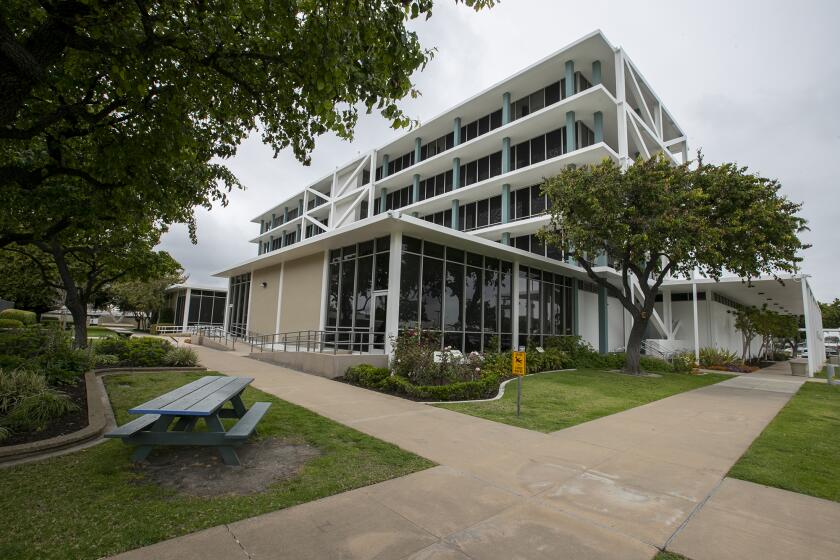UCI team develops noninvasive bone cancer treatment using stem cells
- Share via
UC Irvine pharmaceutical researchers have developed and tested a new noninvasive treatment that uses engineered stem cells to target and kill bone cancer in mice.
The treatment uses stem cells taken from bone marrow that are engineered with targeting agents to drive them toward metastatic sites — new malignant tumors formed when a cancer spreads — to deliver therapeutics, according to Aude Segaliny, a UCI postdoctoral scholar in pharmaceutical sciences.
In doing so, the treatment preserves bone and other healthy tissues.
“What’s powerful about this strategy is that we deliver a combination of both anti-tumor and anti-bone resorption agents so we can effectively block the vicious circle between cancers and their bone niche,” said Weian Zhao, an associate professor of pharmaceutical sciences and biomedical engineering and lead author of the study. “This is a safe and almost nontoxic treatment compared to chemotherapy, which often leaves patients with lifelong issues.”
The UCI team conducted tests on breast cancer bone metastases, which can occur as the disease progresses.
“Since metastases start out small, they are very hard or impossible to detect in the early stages of their growth, which makes them especially hard to treat,” said Henry Farhoodi, a graduate student in pharmaceutical sciences at UCI. “One of the benefits of the cell system we used is that the stem cells can find the metastases on their own when they are still small, even if we cannot detect them.”
The goal, Segaliny said, is to start developing more specialized cancer treatments.
“Bones are very out of the target for most of the disseminated drugs, even with a high dose,” she said. “The problem is the patients die mostly from the side effects of the chemotherapy than from the cancer itself. One of the drugs we compared to our treatment was a chemotherapeutic drug that is used to treat breast cancer patients. If you talk to cancer patients, you will see a very aggressive drug.”
Farhoodi added cells “can have a lot more effect than a drug.”
“Drugs do one thing because they’re simple,” he said. “But, because cells are complicated, you can engineer them to do a lot of different things at the same time.”
Segaliny added that the team used “smart therapeutic vectors” that have better targeting than current chemotherapeutic treatments and can limit systemic toxicity.
While research and development began at UCI in May 2015, the treatment has not yet been tested on humans.
Segaliny said the team and others are currently working to receive final U.S. Food and Drug Administration approval for the treatment — specifically for the use of mesenchymal stem cells that can differentiate to form skeletal tissue, cartilage, bones and fat — which they expect to come in the next few years.
Receiving FDA approval is currently the largest obstacle in translating the stem cell-based platform to patient bedside care, she added.
Stem cell research in the United States has been contentious in recent years, in part due to connections drawn between the use of human fetal tissue in medical research and the ongoing abortion debate.
The Associated Press reported in early June that the Trump administration had decided to end medical research on human fetal tissues by government scientists.
The U.S. Department of Health and Human Services has said that government-funded research at universities could continue, but would be subject to additional scrutiny. The policy change does not affect privately funded research.
Embryonic stem cells are less specialized than adult ones, according to the National Institutes of Health, and can differentiate into all cell types in the body.
Embryonic stem cells also are easier to grow.
Segaliny wrote in an email Monday that there are ongoing efforts to use stem cells from umbilical cords, which are a rich source of mesenchymal stem cells.
“I think, in general, to really efficiently fight cancer we have to use combined therapy,” she said in an interview. “Using one approach is not efficient. That’s why using some stem cell-based therapy is an important way to combine [and make] the treatment more specific to the cancer niche ... We can reduce the side effects.”
All the latest on Orange County from Orange County.
Get our free TimesOC newsletter.
You may occasionally receive promotional content from the Daily Pilot.




